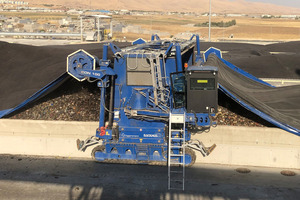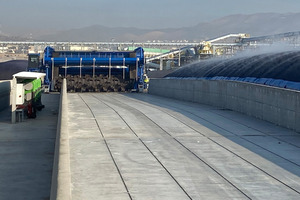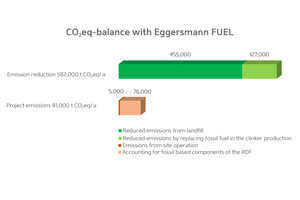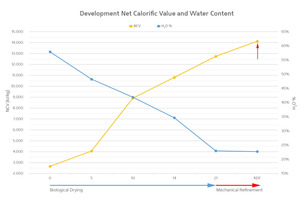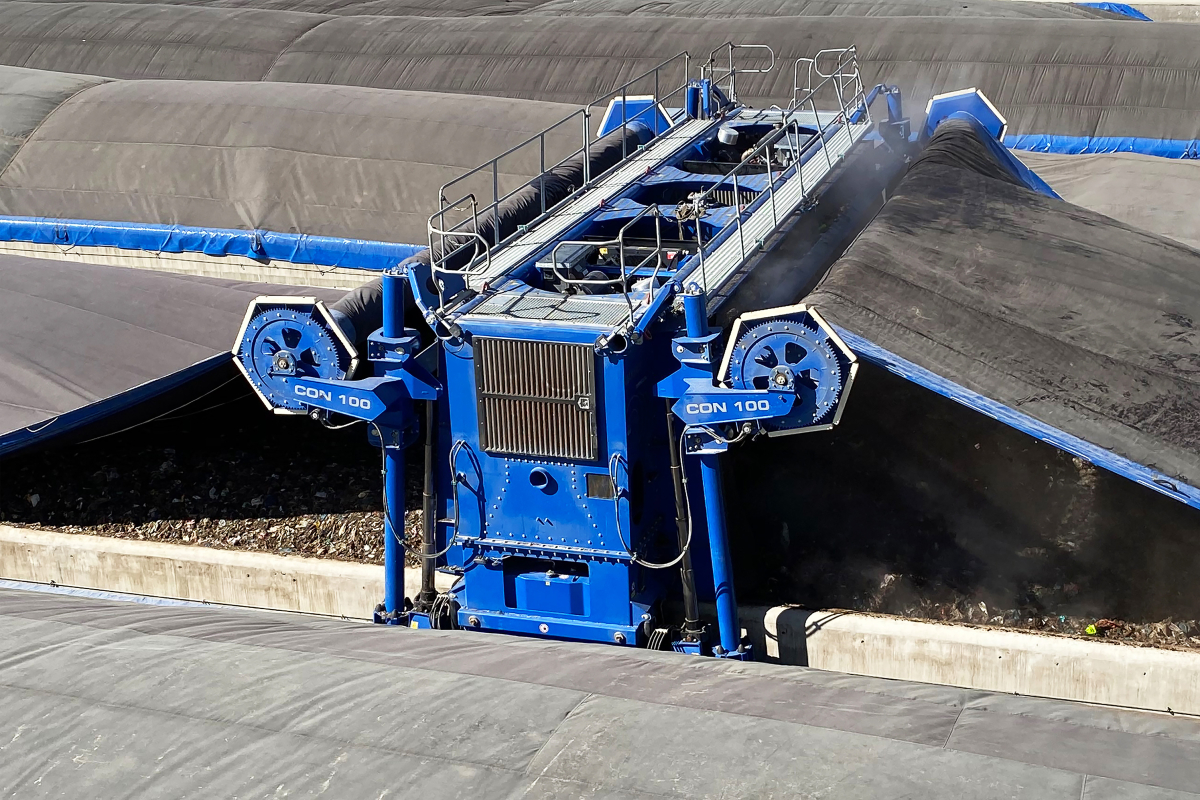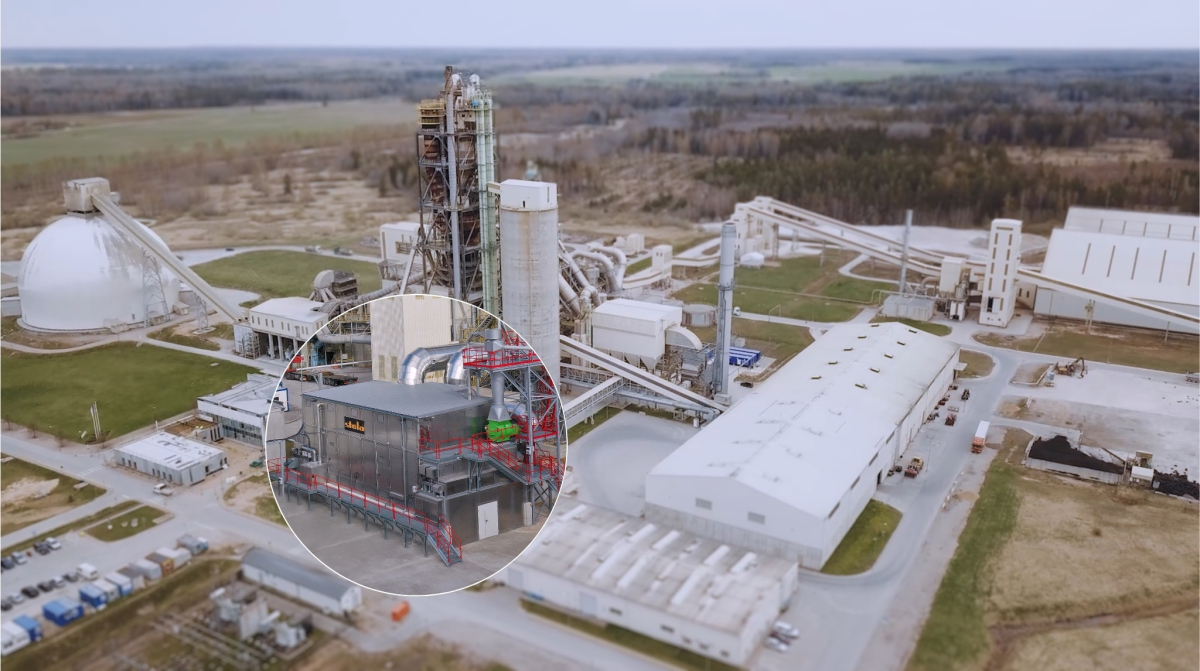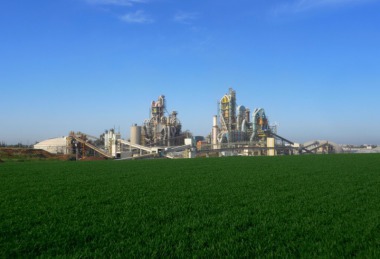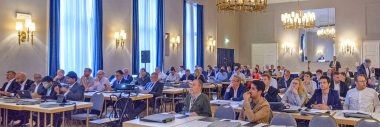More sustainable substitute fuels: Unfolding the full potential of biomass
Refuse-derived fuels (RDF) from municipal waste equally offer enormous ecological and economic potential – especially when they contain biomass. Nevertheless, they are hardly used in many countries. Even though their production is simple and the necessary investment costs comparatively low. Moreover, processes such as Eggersmann Fuel can be applied to small as well as very large waste volumes worldwide.
Multiple challenges
Refuse-derived fuels are not the solution to one problem, they are an approach to a combination of several pressing challenges. Specifically, they can be used to address the large-scale landfilling of municipal waste, global warming and the industry‘s ever-growing demand for energy together in an economical way. In fact, the landfilling of untreated municipal waste with a high amount of biomass is a significant contributor to global warming. Especially if waste is landfilled without any protective measures. After all, the emissions are not limited to microplastics or toxic chemicals released into the soil and groundwater. Large amounts of methane (CH₄; 25 times higher contribution to global warming than CO2) and nitrous oxide (N2O; 300 times higher contribution to global warming than CO2) are also produced by the onset of uncontrolled biodegradation of the untreated biomass [1].
From disruptive factor to fuel
It is precisely this biomass that makes incineration of municipal waste so difficult. After all, organic material consists to a large extent of water and since the proportion of biomass in municipal waste is often 50% and above, a total water content of 60% is not uncommon. Such a high moisture content significantly reduces the calorific value. Here the Eggersmann Fuel philosophy sets in. The Eggersmann Recycling Technology has rethought the conventional mechanical production of substitute fuels from mixed municipal waste and combined mechanical with biological waste processing in reverse order: At its core, the Eggersmann Fuel process involves biological drying before mechanical refinement. Conventional methods of RDF production start directly with mechanical processing and try to remove the organics as best as possible. This is usually associated with high impurity rates, as wet biomass has a sticky consistency and prevents easy separation of combustible and non-combustible fractions. In this process, wet organic matter is carried away via adhesions in the direction of RDF and recyclable fractions, as well as fuel fractions like plastic and paper end up in the so-called “rejects”. For the rejects, often the only viable option is landfilling, as the degree of contamination makes processing into compost, if at all, only possible with great effort and high costs. In order to tackle the problem of the high water content, Eggersmann has redesigned the proven concept of its Backhus windrow turners specifically for biological drying as the Con turner. While turning the waste heaps these machines – which can be up to 14.5 m wide – can simultaneously pick up an especially developed Convaero membrane in front of them and place it down again directly behind them. Even during turning, this creates a quasi-closed system. The drying time of the waste is minimised by the combination of aeration, membrane covering and regular turning, whereby the overall processing time depends on the initial water content and the maximum permissible residual water content. The organic fraction is thus transformed from a disrupting factor into a fuel.
As biomass in particular grows back, this aspect of the process is considered to be especially sustainable. “Our Eggersmann Fuel process unfolds the full potential of the renewable, organic fraction. The secondary fuel produced with our process is thus a mixture of fossil and renewable energy. In terms of total energy, it surpasses classic high-calorific RDF from the same mass of municipal waste,” explains Eugen Becker, Business Development Manager at Eggersmann. Taking all relevant factors into account, Eggersmann has calculated a positive CO₂eq-balance of 501000 t annually for one of the plants built with its own process [2]. By comparison, the global average CO₂eq-footprint of a human in 2021 was 4.69 t per year – it was therefore possible to compensate for the annual emissions of an entire city of over 100000 inhabitants [3]. At the same time, Eggersmann Fuel generates enough energy from one ton of municipal waste to produce one ton of cement clinker and reduces the remaining waste mass for landfilling by approximately 80%.
Unused opportunities
Eggersmann offers almost all components from its own production, from crushing to separation. The Eggersmann Fuel concept has already been successfully established in countries such as Indonesia and Iraq, where it even contributes to the expansion of the infrastructure by supplying the cement production with local and renewable energy. At Eggersmann, however, the fact that untreated landfilling of household waste is still practised even in large parts of North America is met with incomprehension. “Of course, North America in particular has much stricter standards and regulations for landfills, but landfilling leaves a financial and ecological burden for the next two generations. From an economic point of view, it is and remains a waste. For example, there are cement manufacturers in the USA who are actively looking for RDF suppliers for their plants – I could provide contacts right away,” expresses Eugen Becker frustrated. He sees a possible reason for the slow development of the production of secondary fuels in the necessary plant size: “Industrial customers also expect correspondingly large suppliers. The process chains must not come to a halt, so there must be a constant inflow of alternative fuels of the required quality. Hardly any international industrial corporation therefore wants to conclude individual contracts with a multitude of small suppliers – regardless of whether they produce in the USA or Iraq. We need closer cooperation between the cement industry, the municipalities and capable waste management companies. This is the only way to create the necessary framework conditions for RDF production on an appropriately large scale. In the end, all sides can benefit from this step and achieve a lot for climate protection but also for greater independence from fossil raw materials.”

